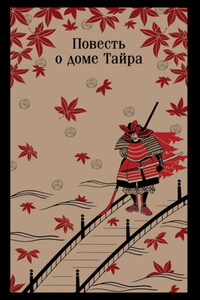Volume One – Chapter One
A Jamaica Sugar Estate
A sugar estate, and one of the finest in the “land of springs,” is that of “Mount Welcome.”
It is situated about ten miles from Montego Bay, in a broad valley, between two rounded ridges. These ridges, after running parallel for more than a mile, and gradually increasing in elevation, at length converge with an inward sweep – at their point of convergence, rising abruptly into a stupendous hill, that fairly merits the name which it bears upon the estate —the “mountain.”
Both the ridges are wooded almost down to their bases; the woods, which consist of shining pimento trees, ending on each side in groves and island copses, pleasantly interspersed over a park-like greensward.
The “great house” or “buff” of the estate stands under the foot of the mountain, just at the point of union between the two ridges – where a natural table or platform, elevated several feet above the level of the valley, had offered a tempting site to the builder.
In architectural style it is not very different from other houses of its kind, the well-known planter’s dwelling of the West Indies. One storey – the lower one, of course – is of strong stone mason-work; the second and only other being simply a wooden “frame” roofed with “shingles.”
The side and end walls of this second story cannot with propriety be termed walls: since most part of them are occupied by a continuous line of Venetian shutters – the “jalousies” of Jamaica.
These impart a singular cage-like appearance to the house, at the same time contributing to its coolness – a quality of primary importance in a tropical climate.
Outside in the front centre a flight of broad stone steps, resting upon arched mason-work, and bordered by strong iron balustrades, conducts to the level of the second storey – the real dwelling-house: since the ground-floor is entirely occupied by store-rooms and other “offices.”
The entrance door is from the landing of the aforesaid escalier, and conducts at once into the “hall” – a spacious apartment, of crucifix-shape, running clear across the building from side to side, and end to end. The current of air admitted by the open jalousies, passing constantly through this apartment, renders it at all times delightfully cool; while the lattice-work serves to mellow the glare of light, which, under the sky of the tropics, is almost as disagreeable as the heat. An uncarpeted floor, composed of the hardest sorts of native wood, and subjected to a diurnal polish, contributes to increase the coolness.
This great hall is the principal apartment of the dwelling. It is dining and drawing-room in one – where side-boards and cheffoniers may be seen in juxta-position with lounge chairs, fauteuils, and ottomans – a grand chandelier in the centre extending its branches over all.
The bed-chambers occupy the square spaces to one side of the cross; and these also have their jalousied windows to admit the air, and exclude, as much as possible, the sultry rays of the sun.
In Mount Welcome House, as in all other country mansions of Jamaica, a stranger would remark a want of correspondence between the dwelling itself and the furniture which it contains. The former might be regarded as slight, and even flimsy. But it is this very character which renders it appropriate to the climate, and hence the absence of substantiality or costliness in the style and materials of the building.
The furniture, on the other hand – the solid tables of mahogany, and other ornamental woods – the shining carved side-boards – the profuse show of silver and cut glass that rests upon them – the elegant couches and chairs – the glittering lamps and candelabras – all combine to prove that the quasi meanness of the Jamaica planter’s establishment extends no farther than to the walls of his house. If the case be a cheap one, the jewels contained in it are of the costliest kind.
Outside, the great house of Mount Welcome looks grand enough. Its broad façade, in which the deep green of the jalousies contrasts pleasantly with the white of the surrounding walls – the massive stone stairway in front – the wooded mountain sweeping up and forming a background of variegated green – the noble avenue of nearly a mile in length, with its double rows of tamarinds and cocoa-palms, leading up in front from the lower end of the valley – all contribute to produce a picture of almost palatial grandeur.
Nor does a nearer view detract from the splendour of this picture. The platform on which the house is built affords space for a large garden and shrubbery, extending rearward to the mountain-foot, from which they are separated by a high wall of stone.
The mountain is a conspicuous feature of the landscape. Not so much from its height: for there are others of equal elevation near to it; and further off, though still within sight, many still higher. Even the famed “Blue Peak” is visible, towering hundreds of feet above the surrounding summits.
Nor is it conspicuous from being isolated. On the contrary, it is only a spur of that vast elevated chain of hills, that, separated by deep gorge-like valleys, and soaring thousands of feet above the level of the Caribbean Sea, are known as the “Blue Mountains of Jamaica.”














